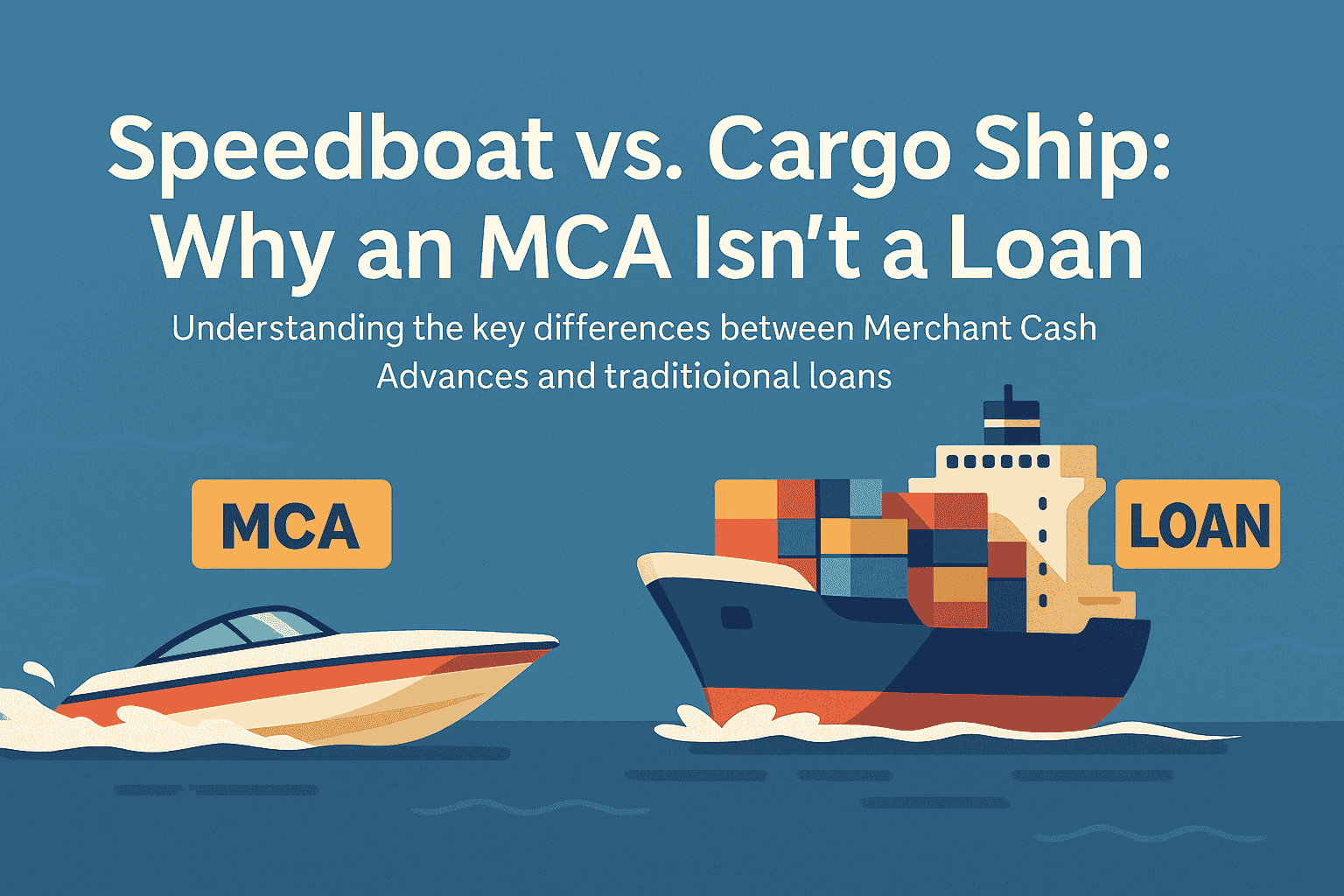
Speedboat vs. Cargo Ship: Why an MCA Isn't a Loan
In the world of business financing, it’s easy to lump every source of capital into the same bucket. But comparing a Merchant Cash Advance (MCA) to a traditional bank loan is like comparing a speedboat to a cargo ship. Both will get you across the water, but they are engineered for entirely different purposes, speeds, and conditions. For anyone operating in the MCA space, understanding this distinction isn’t just academic—it’s the core of our value proposition.
The Fundamental Structure: A Sale, Not a Debt
The biggest difference is the legal and financial structure. A traditional loan is a debt instrument. A bank lends a principal amount, and the business is legally obligated to repay it, plus interest, over a fixed term. An MCA, on the other hand, is a commercial transaction. It’s not a loan; it’s the purchase of a portion of a business’s future sales at a discount. We aren’t lending money; we are buying a future asset—your receivables. This is why the regulatory landscape is different and why we can operate with a different model.
Speed, Access, and Repayment
This structural difference dictates everything that follows. Because we are analyzing recent cash flow and sales volume instead of years of tax returns and collateral appraisals, we can deliver capital in hours or days, not weeks or months. This speed is crucial for businesses that need to act now.
The repayment model reflects this. A bank loan demands a fixed monthly payment, a rigid obligation that doesn’t care if you had a great month or a terrible one. An MCA’s repayment is designed to be flexible because it’s tied directly to your sales. Repayments are typically a small, fixed percentage of your daily or weekly credit card sales. When sales are strong, you pay back more. When business is slow, the repayment amount automatically decreases, easing the pressure on your cash flow.
Head-to-Head Comparison
While both provide capital, their features, costs, and ideal use cases are worlds apart. Here’s a direct comparison:
| Feature | Merchant Cash Advance (MCA) | Traditional Business Loan |
|---|---|---|
| Funding Type | Purchase of future sales receivables at a discount. | A loan of a principal amount that creates debt. |
| Repayment Structure | A percentage of daily/weekly sales; payments fluctuate. | Fixed weekly or monthly installment payments. |
| Cost Structure | A “factor rate” is applied to the advance amount upfront. | An Annual Percentage Rate (APR) is applied to the balance. |
| Funding Speed | Extremely fast; often within 24-72 hours. | Slow; can take weeks or even months. |
| Approval Basis | Based on recent sales history and cash flow. | Based on credit score, time in business, and collateral. |
| Collateral | Typically not required. | Often required, such as real estate or equipment. |
The Right Tool for the Job
Ultimately, MCAs and traditional loans are not direct competitors; they are different tools for different jobs. A bank loan is the right tool for a business with a strong credit history and a long-term, planned project where time is not a critical factor. An MCA is the perfect tool for a business that needs to act now—to buy inventory at a discount, repair critical equipment, or fund a sudden growth opportunity—and values immediate access to capital. Understanding this core difference is the first step to mastering the modern financing landscape.
Ready to Unlock Lending Data From Your Financial Documents?
Schedule a demo to see how ExaThinkLabs can streamline your document analysis process.
Schedule a personalized demo today to see how Exathinklabs can help you escape the document deluge and unlock new levels of efficiency and accuracy.